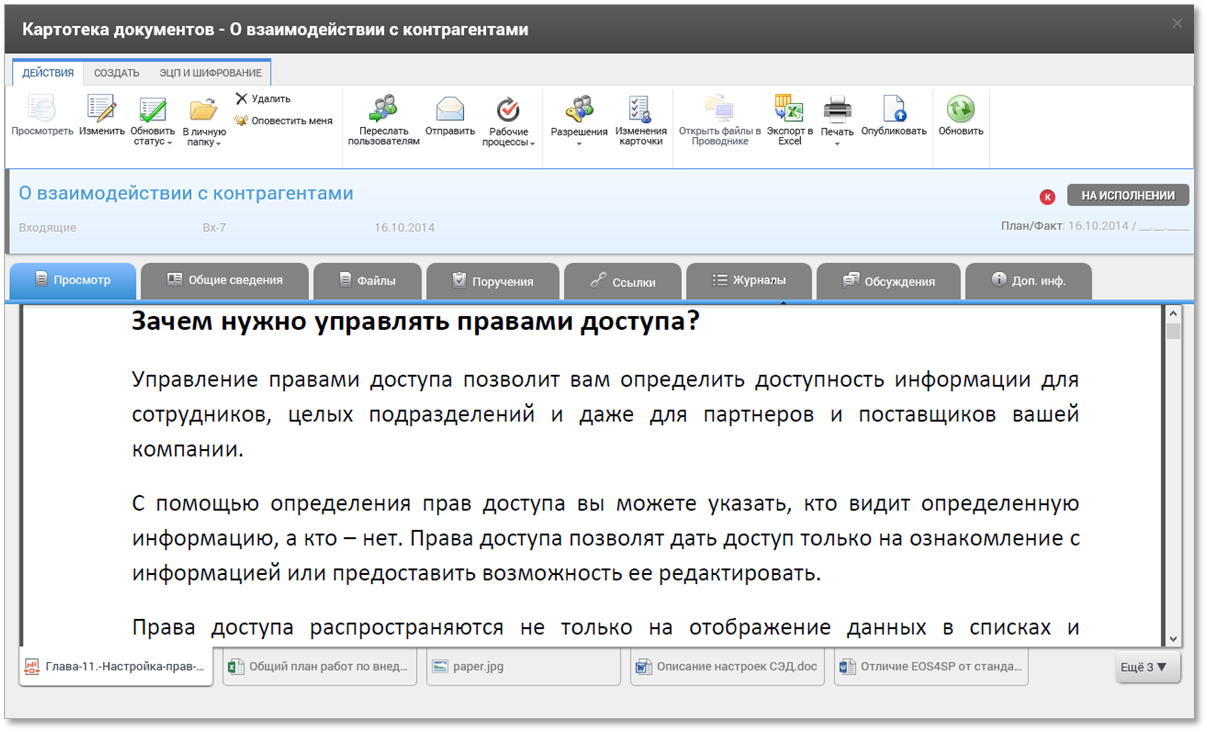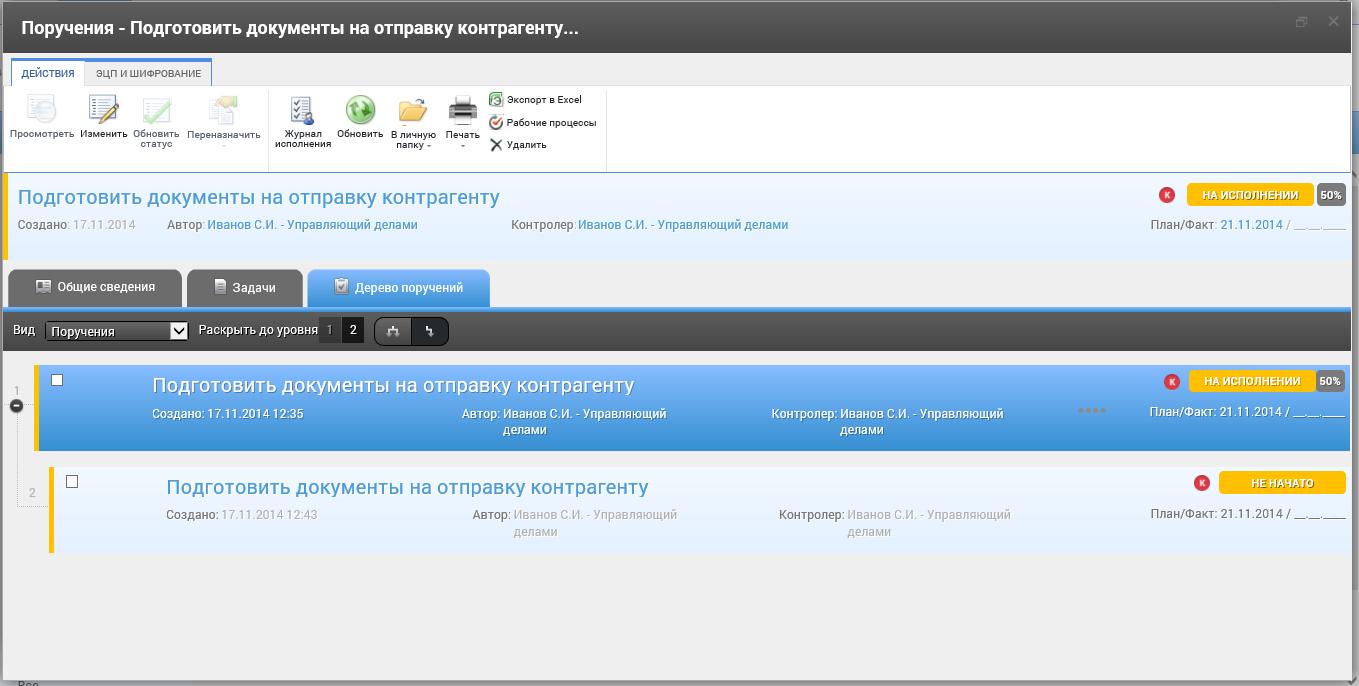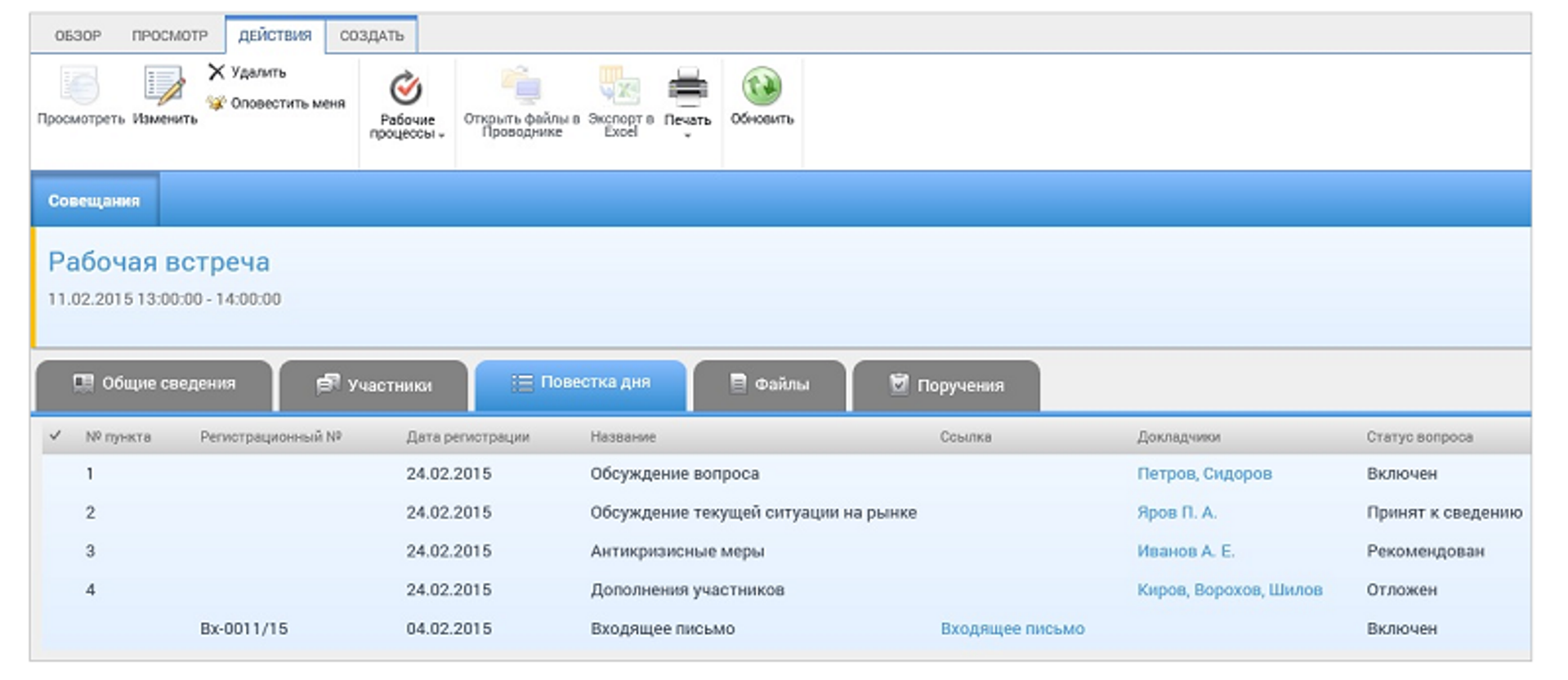Overview of the new version of EOS for SharePoint 2013
Hello, Habr! In today's article, we will talk about new and changed EOS for SharePoint 2013 features from the Electronic Office Systems company in terms of user and technical operation, about the advantages of the new version compared to competitor products, about new and planned additional options and subsystems, about the migration procedure from older versions to EOS for SharePoint 2013 , as well as the first-party user experience.
The latest release of EOS for SharePoint 2013 took place a year and a half ago, six months after the release of the latest version of Microsoft SharePoint in the spring of 2013.

Before proceeding to the review of innovations, we recall that EOS for SharePoint is an automated workflow system that provides a user’s personal place with an advanced search engine and solves the following tasks:
with the ability to connect such additional options as:
Changes in EOS for SharePoint on MS SharePoint 2013 affected the interface, as mentioned above, functionality and implementation. In addition, to the already considerable list of additional options and modules, the “File Storage” module is added in version 4.0. But first things first.
Previous editions of EOS for SharePoint (for ECM 2007, 2010) had an inherited platform design, while the new version has its own similar design developed by us together with the Interactive Design Laboratory.
Usability analysis and customer reviews have influenced the new usability concept. As in the previous version, the box has predefined workplaces, now there are 5 of them: for the user, manager, registrar, controller and universal, as well as the ability to create additional RMs for customization for users whose main page is represented by dashboard. Depending on the user role, RM includes 1-4 blocks (such as: documents or tasks, my folders, search, reports). A preview of the documents from the card appeared.

In terms of the capabilities of the innovation system, there are quite a lot, we list a part of them.
EOS for SharePoint, adapted for the specific features of workflow in Russia, it has a number of competitive advantages:
The following options have been added in EOS for SharePoint 4.0:
We continue to support the version for SharePoint 2010, however improvements will be made to the current version of the product. If desired, the client can upgrade to the current version by contacting the support of EOS.
The EOS for SharePoint system is being implemented by many large budget and private organizations with a complex management structure and a large workflow. Each company needed to create a single workspace, organize and coordinate documents, and automate internal activities.
Thanks for reading. To be continued.


EOS for SharePoint 4.0 Changelog
Before proceeding to the review of innovations, we recall that EOS for SharePoint is an automated workflow system that provides a user’s personal place with an advanced search engine and solves the following tasks:
- registration and approval of documents,
- control over their execution,
- accounting orders
with the ability to connect such additional options as:
- electronic signature and encryption,
- stream scanning
- the provision of public services,
- interdepartmental electronic document management,
- automation of accounting of documents of the archive fund,
- applications for smartphones and tablets,
- as well as two new modules: Meeting Management and File Storage.
Changes in EOS for SharePoint on MS SharePoint 2013 affected the interface, as mentioned above, functionality and implementation. In addition, to the already considerable list of additional options and modules, the “File Storage” module is added in version 4.0. But first things first.
Design changes and usability improvements
Previous editions of EOS for SharePoint (for ECM 2007, 2010) had an inherited platform design, while the new version has its own similar design developed by us together with the Interactive Design Laboratory.
Usability analysis and customer reviews have influenced the new usability concept. As in the previous version, the box has predefined workplaces, now there are 5 of them: for the user, manager, registrar, controller and universal, as well as the ability to create additional RMs for customization for users whose main page is represented by dashboard. Depending on the user role, RM includes 1-4 blocks (such as: documents or tasks, my folders, search, reports). A preview of the documents from the card appeared.

Extending EOS for SharePoint 2013 functionality
In terms of the capabilities of the innovation system, there are quite a lot, we list a part of them.
- The draft documents introduced support for editions, stages of tasks and their typing.
- The list of magazines has been replenished, now it is: manually generated transfer and receive / send logs, as well as automatic ones - branch logbook (in the transfer log), signature, execution, access, change, and card review logs, reporting options are expanded.
- For integration with external systems such as ERP, ABS, CRM and others, card generation is available using a web service.
- The workflow setting has been expanded, the notification mechanism has been improved.
- In working with documents, we expanded access rights, control functions for data entry, introduced new possibilities in document binding (creating a linked document by copying, auto-linking, inheriting details and attached files) and printing, as well as the option of publishing approved documents in a separate repository.
- In orders, the deadlines are recorded in the journal, the performance of the “Tree of Orders” and the settings for displaying information are improved.

- As for support for mobile devices , improved features appeared in SharePoint 2013 itself. Now there are mobile applications for iPAD, Windows-tablets and Win-PCs, including offline, the communication channels are encrypted, it is possible to use a qualified electronic signature. Soon, with EOS for SharePoint 2013 it will be possible to work on Android.
Benefits of EOS for SharePoint 2013
EOS for SharePoint, adapted for the specific features of workflow in Russia, it has a number of competitive advantages:
- Works in companies of various sizes from 10 to 5000 jobs with a large amount of data.
- It has in its functionality everything for organizing workflow.
- Clients to work on mobile devices on iOS and Windows.
- Can use an electronic signature on the iPad as legally significant.
- Flexible, customizable system for each client.
- Adaptable interface for corporate identity.
- Multilingualism with the ability to translate documents into foreign languages.
- Free support and updates during the year from the date of implementation.
- Maintenance and configuration are available to staff.
- All required licenses of the Federal Security Service of the Russian Federation are attached to the program.
New Enhanced EOS for SharePoint 2013 Subsystems
The following options have been added in EOS for SharePoint 4.0:
- Module " Meeting Management ", which allows you to automate and optimize the preparation, conduct of meetings and decisions made at them.
- The system of interdepartmental electronic document management of federal executive authorities (MEDO) for the interaction of various federal departments through electronic document exchange.
- The Archival Case system, which is able to put things in order in the documents and files of the company, track compliance with standards, the periods of storage and implementation of documents, prepare the necessary acts and reports.
- Automated system " Citizens ' Appeal ", a service for government agencies and organizations, used to process requests, referrals to departments and generate responses to appeals.

Upgrade to a new version
We continue to support the version for SharePoint 2010, however improvements will be made to the current version of the product. If desired, the client can upgrade to the current version by contacting the support of EOS.
First users - implementation experience, reviews
The EOS for SharePoint system is being implemented by many large budget and private organizations with a complex management structure and a large workflow. Each company needed to create a single workspace, organize and coordinate documents, and automate internal activities.
Thanks for reading. To be continued.

